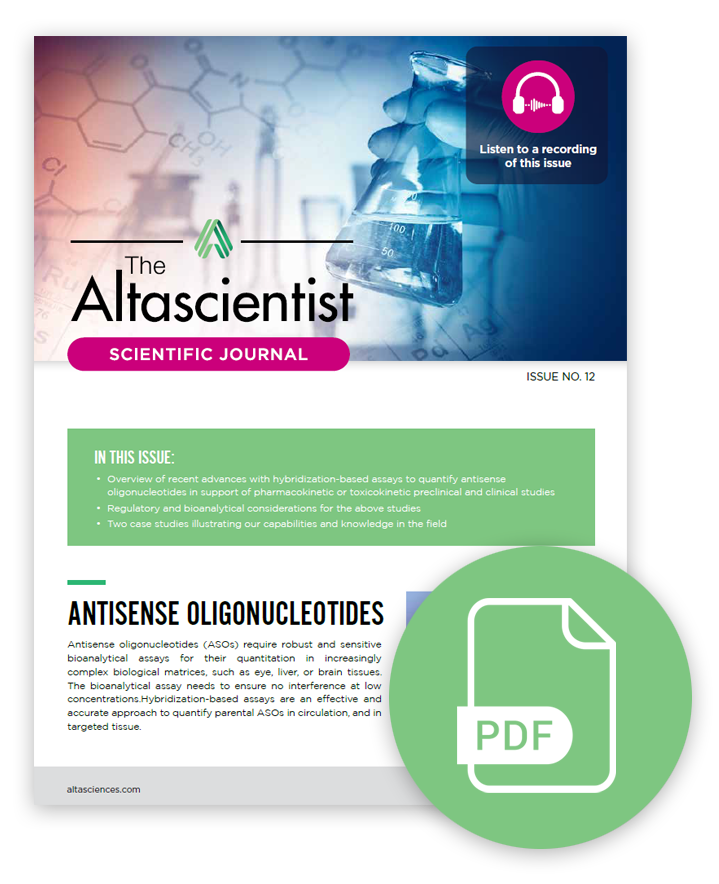ISSUE NO. 12 — Antisense Oligonucleotides

Antisense oligonucleotides—or ASOs—are short, synthetic, single-stranded oligonucleotides extensively used for altering RNA expression to reduce, restore, or modify protein expression via several distinct mechanisms. With possible applications extending to both neurological and non-neurological conditions, there is great potential for valuable new therapeutics.
Developing robust bioanalytical assays is essential for accurately quantifying ASOs within intricate biological matrices, including eye, liver, or brain tissues, and these assays must exhibit high sensitivity to detect ASOs at low concentrations while simultaneously being immune to interference from other components in the sample. Hybridization-based assays have emerged as reliable and effective methods for precisely quantifying ASOs both in circulation and within targeted tissues.
In Issue 12 of The Altascientist, we explore advances in hybridization-based assays more deeply, in addition to:
- regulatory considerations
- case studies
- bioanalytical considerations, including:
- ADAs and metabolite interference
- ASO quantitation in tissues
- method sensitivity
- ADAs and metabolite interference
This issue also features two case studies about resolving challenges with matrix effect and about stability of ASOs in tissue matrix.
Regulatory Considerations for ASO Research
No ICH or FDA regulatory guidelines specifically address expectations or standards for oligonucleotide products. Nonclinical development and safety evaluations of oligonucleotide therapeutics have generally followed small molecule regulatory guidelines. Until such time as specific guidelines are issued, it is important for bioanalytical service providers to work from a position of thorough knowledge and understanding to ensure that potential challenges are adequately addressed.
ASOs have different mechanisms of action and, as a result, diverse toxicology profiles may be possible, which highlights the importance of conducting a thorough safety toxicology study. The potential toxicities can be due to interactions between the ASO molecule and other molecules (including proteins) as a result of Watson-Crick base pairing to unintended nucleic acids, or through independent mechanisms. ASOs are typically not immunogenic in nature. However, when assessing the risk of developing an immunological response to the drug, it is important to take into account whether an endogenous counterpart is present and whether it is similar to the drug. In this case, any immune response generated against the drug will spread to the endogenous counterpart, which may potentially cause a safety concern. In case oligonucleotides are covalently linked to a given ligand, immunogenicity to the ligand linker or the oligonucleotide would need to be evaluated as a precaution. Therefore, it is important to characterize the anti-drug antibody (ADA) response in preclinical and clinical studies and report any ADA-positive samples as a risk-based approach.
Explore all issues of The Altascientist in our Resource Center. And don’t forget to subscribe to “The Altascientist: Audiobooks” on Spotify, Apple Podcasts, or wherever you get your audio content.